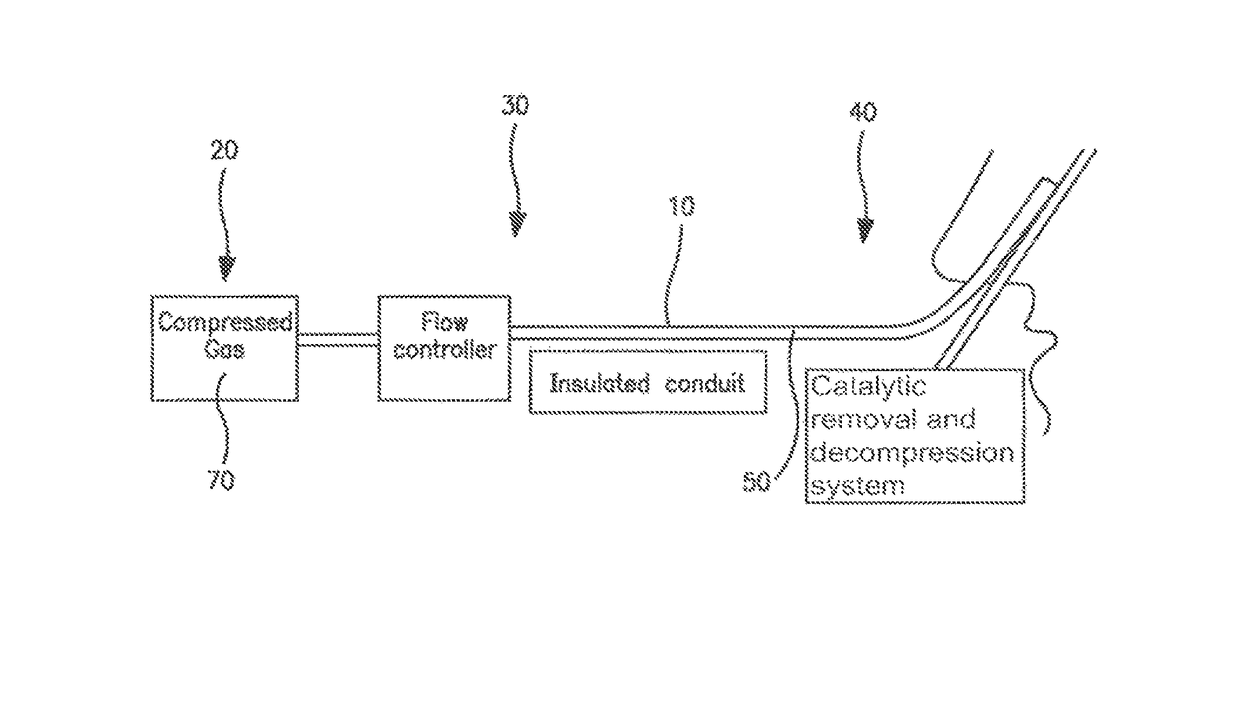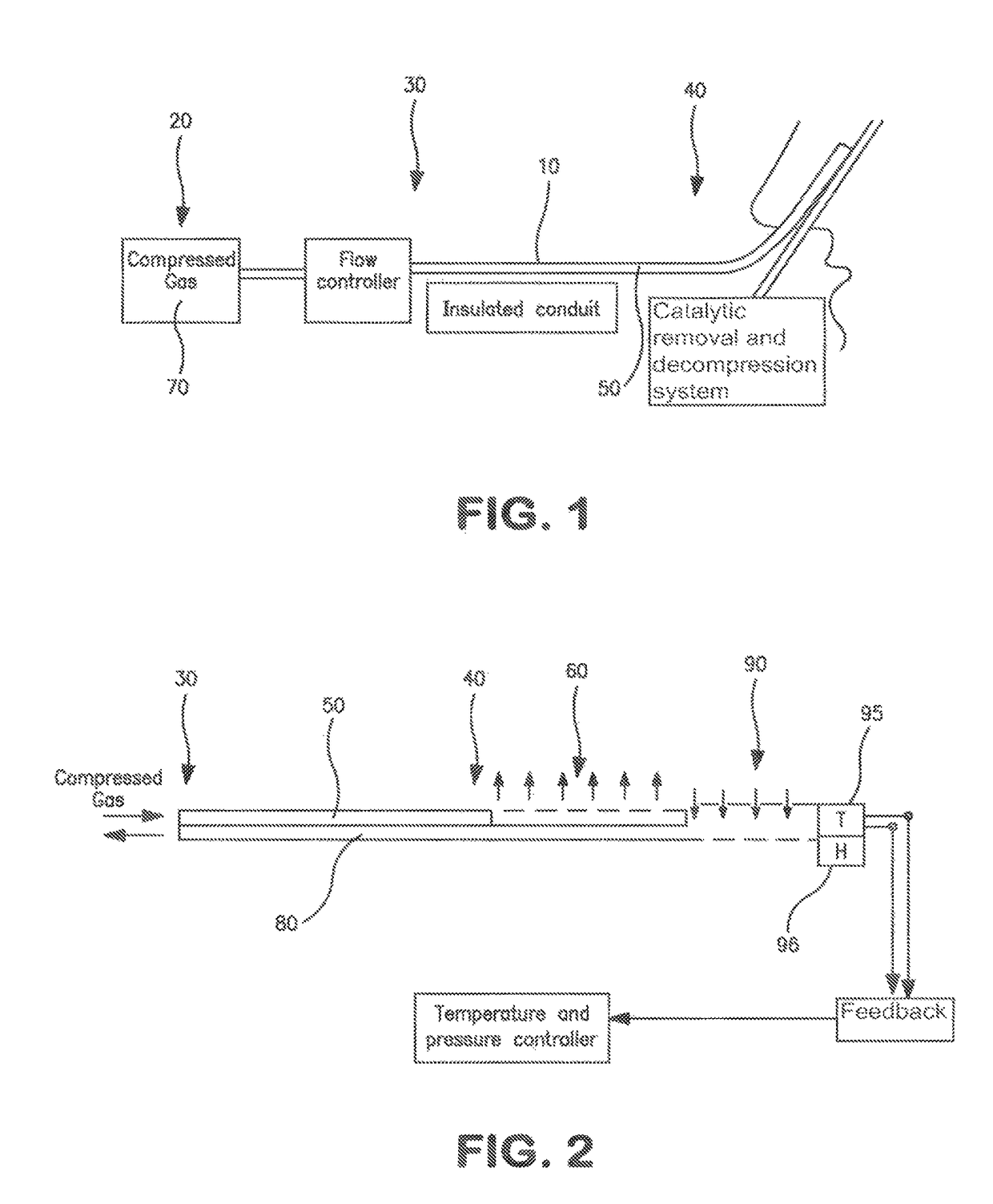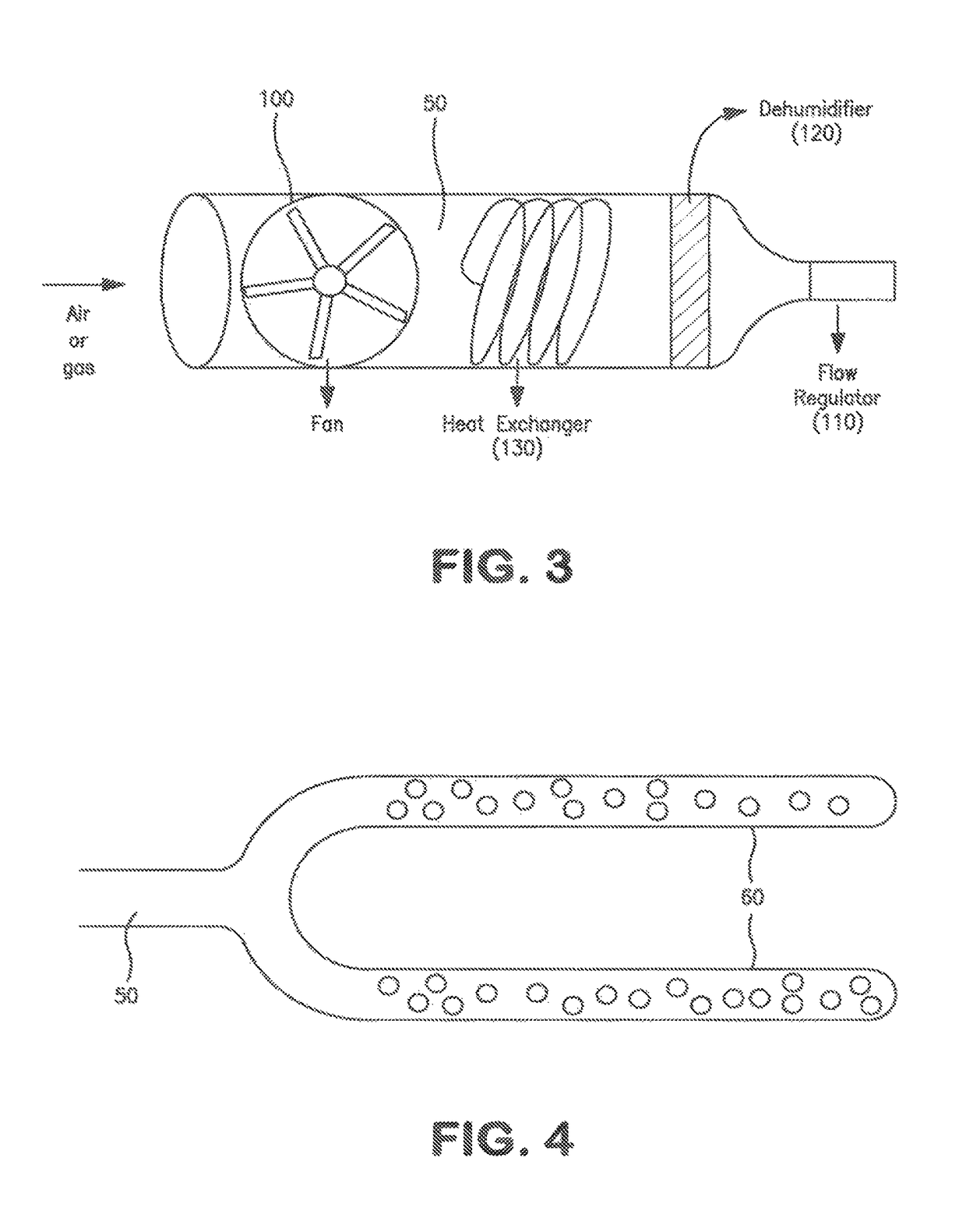Method and device for non-invasive anatomical and systemic cooling and neuroprotection
a non-invasive anatomical and systemic cooling and neuroprotection technology, applied in the field of non-invasive anatomical and systemic cooling and neuroprotection, can solve the problems of cerebral injury, inability to provide a reliable and easy-to-implement method, and cardiac arrest (ca) is a leading cause of morbidity and mortality in the developed world
- Summary
- Abstract
- Description
- Claims
- Application Information
AI Technical Summary
Benefits of technology
Problems solved by technology
Method used
Image
Examples
example 1
Nasal Cooling in Porcine Subjects
[0091]This example illustrates the effect of high flow nasal dry air on the cortical and core body temperature in intubated adult pigs, modeling human responses.
Core Body and Brain Temperature During High Flow Dry Air in Intubated Pigs:
[0092]Four adult male pigs (70 pound) were anesthetized and intubated. Thermocouples were placed in the right atrium and the lateral ventricles through a temporal burr hole. Compressed dry air was delivered through the custom nasal cannula at 80 to 100 L / min for 10 minutes. FIG. 11 shows simultaneous recordings of core temperature from the right atrium (top) and the brain temperature from the lateral cerebral ventricles (bottom). The brain temperature decreased from 35.9±0.3° C. to 32.3±0.4° C. over 10 minutes. During the same time period, the core body temperature decreased from 35.8±0.7° C. to 35.2±0.4° C. The brain temperature promptly returned to baseline within 10±1.3 minutes of cessation of the airflow. For a giv...
PUM
 Login to View More
Login to View More Abstract
Description
Claims
Application Information
 Login to View More
Login to View More - R&D
- Intellectual Property
- Life Sciences
- Materials
- Tech Scout
- Unparalleled Data Quality
- Higher Quality Content
- 60% Fewer Hallucinations
Browse by: Latest US Patents, China's latest patents, Technical Efficacy Thesaurus, Application Domain, Technology Topic, Popular Technical Reports.
© 2025 PatSnap. All rights reserved.Legal|Privacy policy|Modern Slavery Act Transparency Statement|Sitemap|About US| Contact US: help@patsnap.com



